#eadweard j. muybridge
Text

Eadweard J. Muybridge ca 1884 - 1887
4K notes
·
View notes
Text

Eadweard J. Muybridge. Movement of the Hand, Beating Time
129 notes
·
View notes
Text

Eadweard J. Muybridge, Transplanting the Young Coffee Tree, Antigua, 1875 x
0 notes
Text

Leaping
negative 1878–1879; print 1881
Eadweard J. Muybridge (American, born England, 1830 - 1904)
Not currently on view
getty
68 notes
·
View notes
Text

Eadweard J. Muybridge - Ancient sacrificial stone, near city of Guatemala (c. 1876)
18 notes
·
View notes
Text
I wrote this...in April. It's exclusive to my Iced Tea (5$) and Black Coffee (10$) patrons. I come back, as I've been doing and will continue to do, compulsively to NOPE and to the concept of the camera and to what it unlocks and to what it attaches itself to. And also about what happens when the camera triangulates the non Black non white body and the Black body (yes, the distinction is crucial), the animal, and the idea of freakisness and complete expulsion from humanity. And I also tie this to freak shows during the 1850s-1860s, specifically P.T Barnum's Circus, and who are the "freaks", and who is spectacting.

P. T Barnum's work of stripping the Human with associate J. A Bailey

Jupe and Gordy's fist bump

Em Haywood (Keke Palmer) and O. J Haywood (Daniel Kaluuya)

Plate 626 from Eadweard Muybridge's ANIMAL LOCOMOTION, the very first assembly of photographs used to create a motion picture
The film gifs and archival materials above best visually describe the poem. Here are some excerpts to whet your appetite:
and a hand resting on a spectacle
twice spat out
with the gorged skins lined up with the monkeys.
What does it mean to abuse an animal
whose teeth you cannot pluck ?
Who eats twice a day when serrated with
a fading rose and some lies ?
and
It's the heavy of a rising opera
the encore of pain exhibition
a chorus member served rare
as she should.
and
What do you mean human ?
What do you mean the leftover fur
of a too efficient machinery,
a hand over a heart over a head
lowered in rage ?
and
Wariness filters the sourness of the overtly watched;
a small camera which long legged beauty,
10 notes
·
View notes
Text

“San Francisco – P.M.S.S. Co.’s Wharf- Off for China and Japan” c. 1874. Illustrator unknown (from the collection of the National Parks Gallery).
Ships, Sheds and Wharves: Chinese and the Pacific Mail Steamship Co.
The earliest history of the Chinese in America remains intertwined with the Pacific Mail Steamship Company’s sheds on San Francisco’s wharf and the broader narrative of maritime transportation, immigration, and economic development during the 19th century in California. Founded in 1848 as a response to the California Gold Rush, the Pacific Mail Steamship Company (“PMSSC”) aimed to carry US mail on the Pacific leg of a transcontinental route from the east coast of the US to San Francisco on the west coast via Panama.
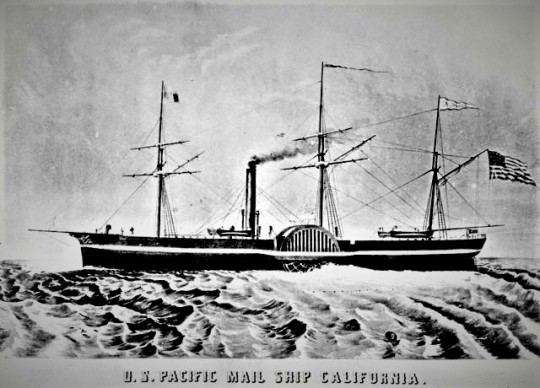
Illustration of the steamship SS California, the first ship of the Pacific Mail Steamship Company. Only a few passengers were on board when the ship left New York on October 6, 1848. By the time the ship reached its stop on the Panama’s Pacific coast, word had spread of the great new find of gold in California. Over 700 people tried to get passage on the ship in that harbor. The Pacific Mail agent managed to cram 365 people aboard the ship before it set sail for California. The ship and passengers reached San Francisco on February 28, 1849, where all but one member of the crew deserted the ship for the goldfields. The ship was lost in a wreck off the Peruvian coast in 1894. (Illustrator unknown, from the collection of the US National Postal Museum)
The discovery of gold in the Sierra Nevada in 1849 produced a massive influx of people to California
from all over the world, including China. According to historian Thomas W. Chinn, “Hong Kong was the general rendezvous for departure to California. The emigrants usually stayed at dormitories provided by the passage brokers or at friends' and relatives' homes until the day of embarkation. The earliest ships between China and California were sailing vessels, some of which were owned by Chinese. . . . However, most of the ships in the early days bringing Chinese immigrants were American or British owned. At the time the shipping of Chinese to California was a very profitable business.”
The voyage in sailing vessels across the Pacific varied from 45 days to more than three months. Chinese passengers typically spent most of the voyage below decks in the overcrowded steerage. Conditions aboard the ships varied with the ship and shipmaster. In March 1852, 450 Chinese arrived in the American ship Robert Browne bound for San Francisco objected to the captain's order to cut off their queues as a hygienic measure. They rebelled, killed the captain and captured the ship. According to Chinn, “health conditions on the bark Libertad were so bad that when she sailed into San Francisco harbor in 1854, one hundred out of her five hundred Chinese passengers and the captain had died during the voyage from Hong Kong.”
In 1866, the Pacific Mail Steamship Company (“PMSSC”) entered the cargo and passenger trade to and from the Orient. As the sole federal contract-carrier for US mail, the PMSSC became a key mover of goods and people and a key player in the growth of San Francisco, California.
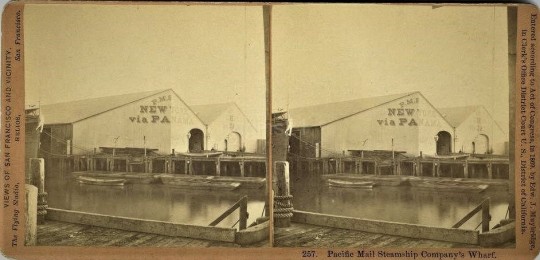
“257. Pacific Mail Steamship Company’s Wharf” c. 1869 -1871. Photo and stereoview by Eadweard J. Muybridge (from a private collection). The Pacific Mail’s wharf at the foot of Brannan Street in San Francisco at the approximate location of its old Pier 36. This was the first waterside view of the city for virtually every Chinese immigrant making landfall in San Francisco.
For the first six decades of the Chinese diaspora to the US, the sheds provided the first experience for every Chinese immigrant on California soil.
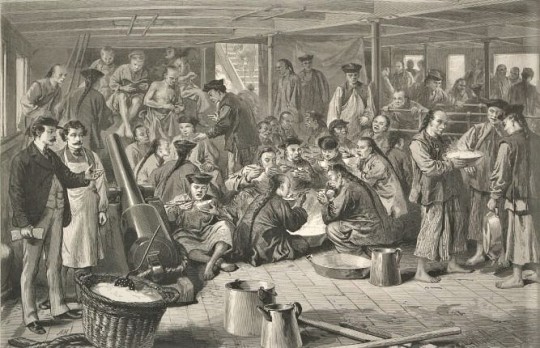
“Chinese Emigration to America,” no date. Illustrator unknown (from the collection of the Bancroft Library). This illustration shows life aboard a Pacific Mail Steamship Co. ship making the passage from China to San Francisco.
Amidst the Gold Rush and burgeoning industries like mining, agriculture, and construction, Chinese immigrants from southern China flocked to California. The PMSSC’s sheds, located along San Francisco’s waterfront, played a crucial role in handling cargo, passengers, and immigrants who arrived via steamships. Serving as pivotal infrastructure, they provided storage space for goods, customs processing areas, and waiting areas for passengers.

Pacific Mail Steamship Co. dock, c. 1864- 1872. Photograph by Carlton Watkins, probably derived from Watkins Mammoth Plate CEW 611. (from a private collection, the Roy D. Graves Pictorial Collection, Bancroft Library; and the San Francisco National Maritime Museum). In this elevated view east from Rincon Hill to the Pacific Mail dock, sidewheel steamer vessels identified by the SF National Maritime Museum as the SS Colorado (built in 1865 and scrapped in 1879), the steamer SS Senator at right (1865-1882), and various sailing ships are seen with Yerba Buena Island in the background. The Oriental Warehouse (built 1867 and still standing at 650 Delancey Street) is at left. The opensfhistory.org site identifies the three-part wooden structure at center as the Occidental Warehouse, used for grain storage, with blacksmith and boiler shops to the left. Ads for C.C. Hastings & Co. Clothing at Lick House can be seen on the fence.
Even as the Gold Rush waned, the PMSSC initiated in 1867 the first regularly scheduled trans-Pacific steamship service, connecting San Francisco with Hong Kong, Yokohama, and later, Shanghai. This route facilitated an influx of Japanese and Chinese immigrants, enriching California’s cultural diversity.
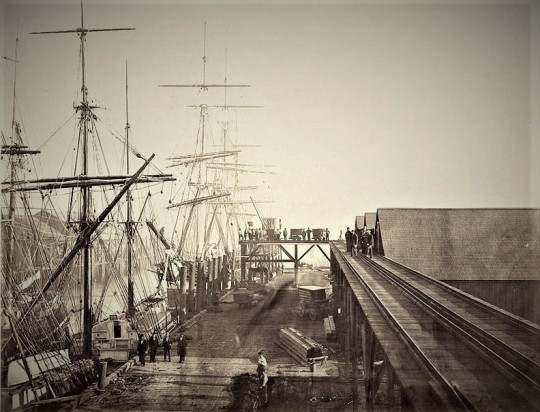
Pacific Mail Steamship Co. docks, c. 1871. Photograph by Carleton Watkins (from a private collection).
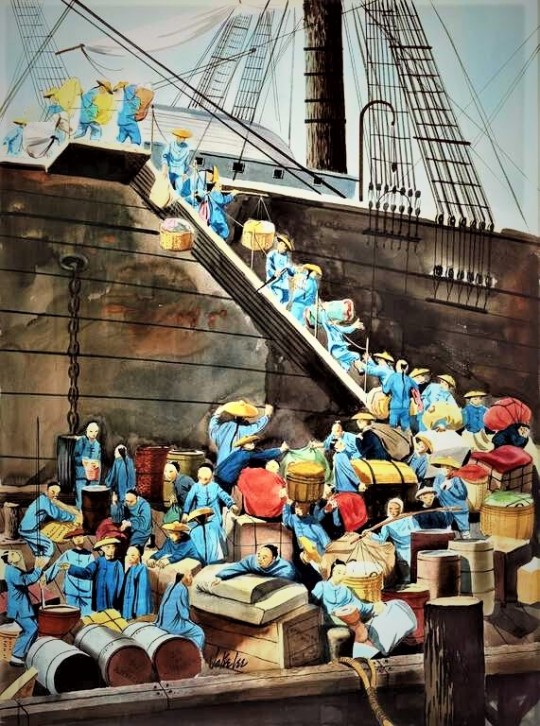
“Disembarking.” Painting by Jake Lee (from the collection of the Chinese Historical Society of America). In this watercolor, one among a suite of paintings commissioned by Johnny Kan for his then-new Kan’s Restaurant on San Francisco’s Grant Avenue in Chinatown, artist Jake Lee depicted a stylized unloading of mostly male passengers at the Pacific Mail Steamship Co. wharf in San Francisco.
When a ship dropped anchor at the dock in San Francisco, the emigrants finally set foot on American soil. A journalist for the Atlantic Monthly in 1869 described the debarkation of 1,272 Chinese as follows:
"… a living stream of the blue coated men of Asia, bearing long bamboo poles across their shoulders, from which depend packages of bedding, marring, clothing, and things of which we know neither the names nor the uses, pours down the plank…. They appear to be of an average age of twenty-five years… and though somewhat less in stature than Caucasians, healthy, active and able bodied to a man. As they come down upon the wharf, they separate into messes or gangs of ten, twenty, or thirty each, being recognized through some to us incomprehensible free-masonry system of signs by the agents of the Six Companies as they come, are assigned places on the long broad shedded wharf [to await inspection by the customs officers]."
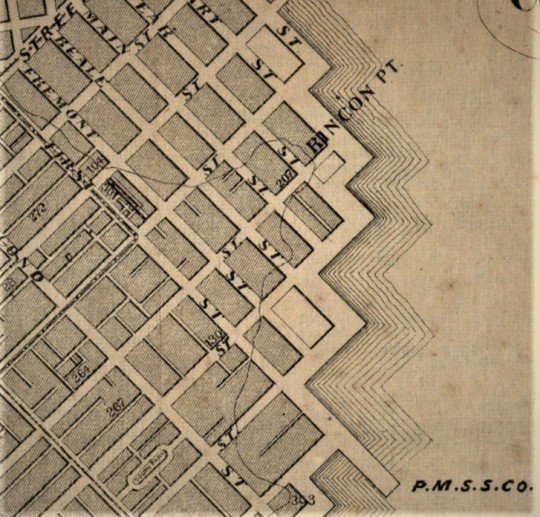
A detail from the "Bancroft's Official Guide Map of San Francisco" of 1873. The lower right corner of the image locates the Pacific Mail Steamship Co. pier at the foot of First Street (at Townsend) running in a southeasterly direction. According to local historian Garold Haynes, "that was before the seawall realignment of the waterfront in the late 1870s."
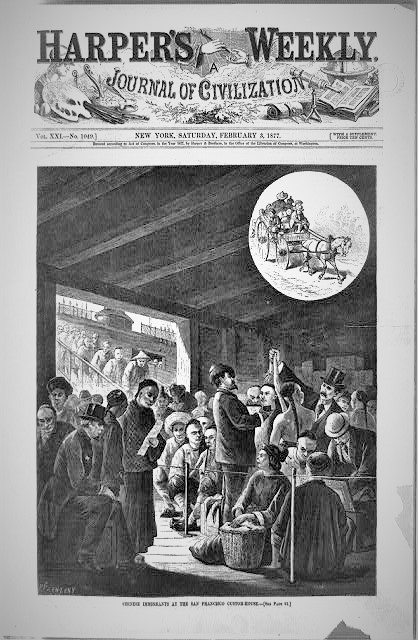
“Chinese Immigrants by The San Francisco Custom House” Harper’s Weekly, February 1877. Illustration by artist Paul Frenzeny (from the collection of the Library of Congress). Chinese immigrants wait for processing in the Pacific Mail Steamship Co.’s sheds while more arrivals from China disembark from the gangway seen in the background.
For many of the immigrants arriving on Pacific Mail steamships, the sheds served as the initial point of contact with the United States. Additionally, the sheds served as immigration processing areas, where Chinese immigrants underwent inspections and screenings. The sheds were a crowded and unsanitary place. Immigrants were often forced to wait for days in the sheds before they could be processed. They were also subjected to medical examinations and interrogations by immigration officials.
As the Atlantic Monthly writer described in 1869 described after each group passed through customs, “. . .They are turned out of the gates and hurried away toward the Chinese quarters of the city hv the agents of the Six Companies. Some go in wagons, more on foot, and the streets leading up that way arc lined with them, running in 'Indian file' and carrying their luggage suspended from the ends of the bamboo poles slung across their shoulders . . .”

In a political cartoon (c. 1888, based on the reference to the Republican Party presidential ticket of 1888 in the upper left corner of the image), Chinese immigrants stream off ships onto the wharves of the Pacific Mail Steamship Co. and the Canadian Pacific Steamship Co. and directly into the factories of San Francisco Chinatown and beyond. Illustrator unknown (from the collection of the Bancroft Library).

"New Arrivals." Date, location, and photographer unknown. The wagon on which the Chinese are riding, presumably having come directly from the Pacific Mail Steamship Co. wharf to San Francisco Chinatown, appears very similar to the 1877 configuration seen in the upper right corner of the preceding Harper's Weekly illustration.
The surge in Chinese immigration led to anti-Chinese sentiments, as reported in the illustrated magazines of the era. The arrival was often violent, as hoodlum elements would sometimes throw stones, potatoes and mud at the new immigrants. After the arrival in Chinatown, the newcomers were temporarily billeted in the dormitories of the Chinese district associations (citing Rev. Augustus W. Loomis, “The Chinese Six Companies,” Overland Monthly, os. v. 1 (1868), pp. 111-117).

“Hoodlums” Pelting Chinese Emigrants On Their Arrival At San Francisco” c. 1870s. Illustrator unknown (from a private collection). A rough sketch of the Pacific Mail Steamship Co. sheds appears in the background.
In San Francisco, local efforts to stop Chinese immigrants moved beyond the sheds and onto the arriving ships, which often became the focal points for Chinese litigants in the local and federal courts.
For example, in August of 1874, the Pacific Mail Steamship Company’s vessel Japan arrived in San Francisco carrying around 90 Chinese women. The Commissioner of Immigration boarded the ship and conducted interviews with about 50 to 60 of these women. From his inquiries, he concluded that 22 of them had been brought to San Francisco for “immoral purposes,” as reported by the Daily Alta California on August 6, 1874. When the Pacific Mail Steamship Company refused to provide the necessary bonds, the Commissioner instructed the ship’s master to keep the 22 women on board.
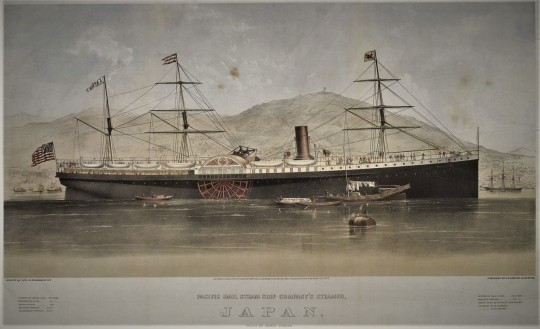
Pacific Mail Steam Ship Company’s Steamer, Japan, c. 1868. Print created by Endicott & Co. (New York, N.Y.), Menger, L. R., publisher (from the collection of The Huntington Library). Junks in the foreground, and, to the left in the background, Hong Kong’s Victoria Peak with semaphore at top appears in the background, center right. The SS Japan is flying the American flag from its stern, a Pacific Mail house-flag from the middle mast, and a pennant with the vessel’s name from the aft mast. A flag flying from the first mast appears to be a red dragon on a yellow field. Print includes vessel statistics and the name of the builder, Henry Steers.
Promptly, attorneys representing the detained women sought legal recourse by requesting a writ of habeas corpus from the state District Court in San Francisco. For two days, legal representatives from various parties engaged in debates over whether the Commissioner’s authority under the law was valid and whether the so-called “Chinese maidens” were indeed involved in prostitution. Reverend Mr. Gibson, who claimed expertise in this area, confidently asserted that Chinese prostitutes could be easily identified by their attire and behavior, likening the distinction to that between courtesans and respectable women in the city. He concluded that only half of the women were destined for prostitution. Ultimately, the District Court ruled that all the women should remain detained and ordered them to stay on the ship.
Shortly before the ship Japan was set to depart, the County Sheriff boarded and brought the 22 women ashore based on a writ of habeas corpus issued by the California Supreme Court. Two weeks later, Justice McKinstry, in a brief opinion on behalf of the court in Ex Parte Ah Fook, 49 Cal 402 (1874), affirmed the lower court’s decision, validating the Commissioner’s authority as a legitimate exercise of the state’s police power.

“258. Steamship Japan in California Dry Dock, Hunter’s Point, San Francisco”c. 1869. A side view of the steamship Japan of the Pacific Mail Steamship Company at the dry dock at Hunters Point. Photograph by Thomas Houseworth (from the Marilyn Blaisdell Collection). The ship would become the setting for a controversial habeas corpus case involving the entry of 22 Chinese women over the objections of state authorities in the case of Ex Parte Ah Fook, 49 Cal 402 (1874).
A third writ of habeas corpus presented the matter to the United States Circuit Court, presided over by Justice Stephen J. Field and Judge Ogden Hoffman. During the oral arguments, Justice Field made it clear that he wouldn’t dismiss constitutional arguments as easily as the state Supreme Court had, emphasizing the principle of equal treatment for citizens and non-citizens.

The Pacific Mail Steamship Co. derrick and coal yard in San Francisco, c. 1871. Photograph by Carleton Watkins (from the collection of the California Historical Society).
In the ruling, Justice Field discharged the petitioners, stating that California’s statute surpasses a state’s legitimate police power and violates the principle of “the right of self-defense.” He noted that the statute could exclude individuals who posed no immediate threat to the state. Judge Hoffman, in a concurring opinion, went further, suggesting that the states should have no control over immigration due to the exclusive nature of the commerce clause.
Although the Circuit Court decision released the Chinese women, while limiting the state’s power over Chinese entry, the Japan case reinvigorated California’s efforts to deter Chinese immigration. The influx of Chinese immigrants coupled with high unemployment in the late 1870s allowed Dennis Kearney of the Workingmen’s Party to target the Chinese as scapegoats. The “Chinese must go” movement gained traction, with both the Republican and Democratic parties adopting anti-Chinese stances.

The Pacific Mail Steamship Co.’s wharf in San Francisco. Photograph by Carleton Watkins (from the collection of the Fine Arts Museums of San Francisco).
During the San Francisco Riot of 1877, the sandlot mob attacked the wharves of the Pacific Mail Steamship Company, because this shipping line represented the primary mode of transportation for America-bound Chinese immigrants headed to California. Although the steamships were not burned, the wharves were partially wrecked. Rioters also burned the lumber and hay yards adjacent to the Pacific Mail wharves.
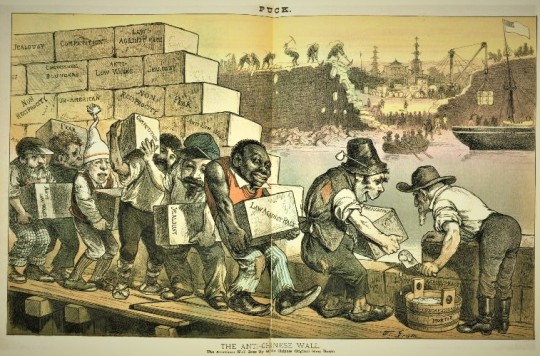
“The Anti-Chinese Wall – The American Wall Goes Up as the Chinese Original Goes Down.” Illustration by Friedrich Graetz in Puck of March 29, 1883 (v. 11, no. 264). The cartoon portrays a multi-ethnic coalition gathered on the wharf to halt Chinese immigration in the aftermath of the passage of the Chinese Exclusion Act in May 1882.
California was able to transfer its racial grievances and resentments to the national stage, culminating in the passage of the Chinese Exclusion Act in 1882. This marked a turning point in the history of Chinese immigration and had profound effects on the Chinese-American community. The Act severely restricted Chinese immigration to the United States.
The use the PMSSC’s sheds posed significant challenges to federal and state attempts to enforce the Exclusion Act (and its punitive extension in the Geary Act of 1892), against all Chinese, regardless of birth or immigration status.
As an article in the San Francisco Call of May 12, 1900, details, the chaotic scene at the Pacific Mall dock where Chinese immigrants disembarked from the ship Coptic was typical for that era. In the Coptic case, federal officials were observed allowing the landing of alleged "coolies" despite the spirit of the exclusion act, causing outrage. The detention shed, initially meant for temporary housing, had become a long-term residence for over 370 Chinese immigrants, generating substantial profit for the PMSSC. The maintenance of this facility posed several concerns, including violations of health regulations and potential disease outbreaks. The Call decried the authorities' negligence in enforcing the law and highlighted the role of a Chinese "ring" in facilitating fraudulent practices and illegal immigration. With multiple ships arriving with more immigrants, the newspaper called for investigation and reform.

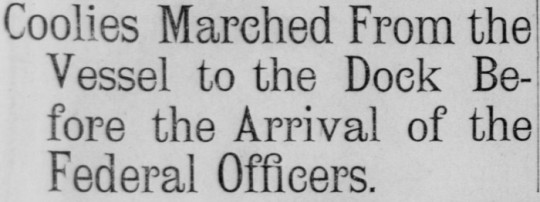


Headlines from the The Call of May 12, 1900, regarding the crowd of detained Chinese immigrants disembarked from the Pacific Mail ships Coptic and America Maru, the lack of security in the Pacific Mail sheds, and alleged immigration fraud.

Illustrations and photographs from the San Francisco Call of May 12, 1900, for its report about the crowd of detained Chinese immigrants disembarked from the Pacific Mail ships Coptic and America Maru, the lack of security in the Pacific Mail sheds, and alleged immigration fraud.
For Chinese and other immigrants and travelers from Asia, the transpacific journey, and even entering San Francisco Bay itself, posed hazards. The dangers were never more evident than in the case of the SS City of Rio de Janeiro. Launched in 1878, this steamship had been an essential component of the Pacific Mail Steamship Company's fleet. Its routes connected pivotal locations such as San Francisco, Honolulu, Yokohama, Japan, and Hong Kong, and the ship had played a role in America's expansion into the Far East and the Pacific in the aftermath of the Civil War and during the Spanish American War.

“A Thousand Boys in Blue S.S. Rio de Janeiro bound for Manila” copyright 1898. Published by M.H. Zahner (from the collection of the Robert Schwemmer Maritime Library). Built by John Roach & Son in 1878 at Chester, Pennsylvania, this vessel had served as a vital link between Asia and San Francisco, regularly transporting passengers and cargo. This stereograph shows its charter by the federal government for use as a military troop transport during the Spanish American War.
On the morning of February 22, 1901, the SS City of Rio de Janeiro commenced its approach to the Golden Gate and the entrance to San Francisco Bay. They had sailed with a crew that was mostly Chinese. History indicates that approximately 201 people were aboard the Rio de Janeiro, as follows: Cabin passengers 29; second cabin, 7; steerage (Chinese and Japanese), 68; white officers, 30; Chinese crewmen, 77. Of the Chinese crewmen, only two spoke English and Chinese. During the long voyage, the ship’s officer gave orders by using signs and signals. The ship’s equipment and lifeboat launching apparatus appeared to be in good working order and were capable of being lowered in less than five minutes.
Near the location of the future location of the Golden Gate Bridge, tragedy struck as the SS City of Rio de Janeiro. In the dense morning fog that obscured the surroundings, the ship collided with jagged rocks on the southern side of the strait, near Fort Point. The vessel’s non-watertight bulkheads led to rapid and unstoppable flooding. In a mere ten minutes, the SS City of Rio de Janeiro succumbed to the relentless forces of the sea.
The majority of the passengers, many of whom were Chinese and Japanese emigrants in steerage, were caught unaware in their cabins as the ship sank. The toll was staggering, with 128 lives lost out of the 210 souls on board. Of the 98 Asians reportedly on board the ill-fated ship, only 15 passengers were rescued, and 41 Chinese crewmen survived.
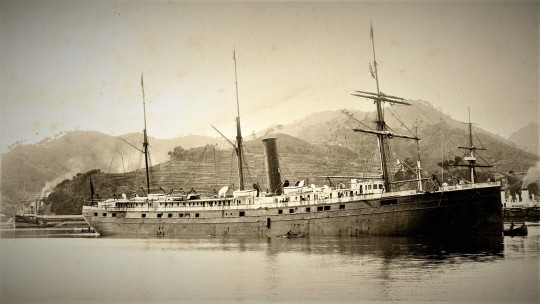
The SS City of Rio de Janeiro in Nagasaki, Japan, c. 1894. Photographer unknown (from the collection of the San Francisco Maritime National Historical Park). The ill-fated ship, which transported passengers and cargo between Asia and San Francisco, sank seven years later after running into rocks near the present site of the Golden Gate Bridge. The never-salvaged shipwreck rests 287 feet underwater.
The sinking of the SS City of Rio de Janeiro represented the deadliest maritime disaster at the San Francisco Bay's entrance, forever etching its name in the annals of maritime history as the “Titanic of the Golden Gate,” drawing a sad parallel to another infamous shipwreck. Today, the case serves as a reminder of the unpredictable forces of nature and the inherent dangers of maritime travel to which thousands of Chinese immigrants and other Asian travelers subjected themselves to gain a better life in America.
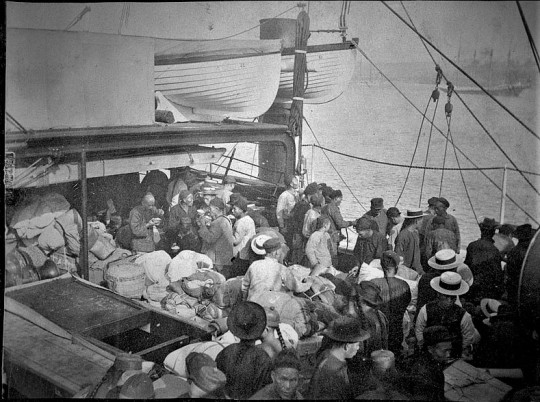
"Chinese Passengers on Deck, 1900–15," enroute to Hawaii. Photographer unknown (from the collection of the Hawaii State Archives). Chinese passengers, some eating from rice bowls, crowd the deck of a steamship. After the Exclusion Acts, the numbers of Chinese voyaging to the US had decreased sharply.
Despite reduced immigration due to the passage of successive exclusion acts in 1882 and 1892, the PMSSC's sheds remained operational, their purpose shifting from off-loading immigrants to facilitating trade and commerce between the east and west coasts of the US.

The Pacific Mail Steamship shed on the San Francisco waterfront at the turn of the century. Photograph attributed to Arnold Genthe. Located at the former pier 36, where Brannan Street runs into the Embarcadero, the immigration station was moved to Angel Island in 1910. Pier 36, the last of the docks at Brannan was torn down in 2012. In just one year, 1852, 25,000 Chinese entered California for the Gold Rush and other opportunities. Chinese America began here.
The convergence of the Central Pacific and Union Pacific railroads in Utah in 1869, had started the process of eroding the Pacific Mail's profitability on the Panama-to-San Francisco route over the ensuing decades, eventually leading to the sale or redirection of many of its ships to other routes.

The Pacific Mail Steamship Co. offices on the southeast corner of Market and First streets in downtown San Francisco, c. 1896. Photographer unknown (from a private collection).
The landscape changed drastically in 1906, when a devastating earthquake and subsequent fire struck San Francisco, including the PMSSC’s wharf facilities. Although destroyed during 1906 disaster, the PMSSC’s sheds were rebuilt shortly thereafter. The sheds continued to be used for detaining and interrogating Chinese immigrants until the opening of immigration station facilities on Angel Island in 1910 for the processing Chinese and other immigrants.
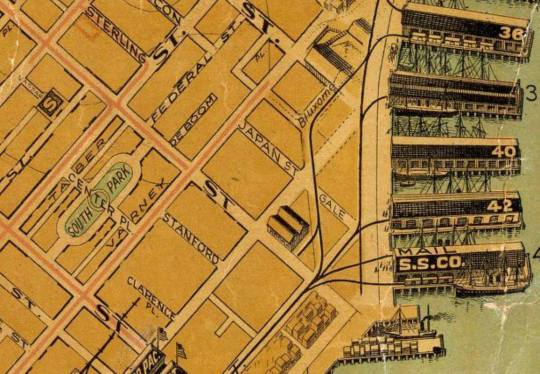
A detail from the August Chevalier Map of 1915. The PMSSC sheds were located on Pier 36 at the intersection of Brannan and First Street.
The legacy of the PMSSC’s sheds, intertwined with their role at the inception of Chinese immigration to California and the US, is deeply rooted in San Francisco's maritime and Chinese American history. Both the company's operations and the experiences of the first wave of the Chinese diaspora arriving on American shores by steamships will remain forever part of the socio-economic dynamics of 19th-century San Francisco and the American West.
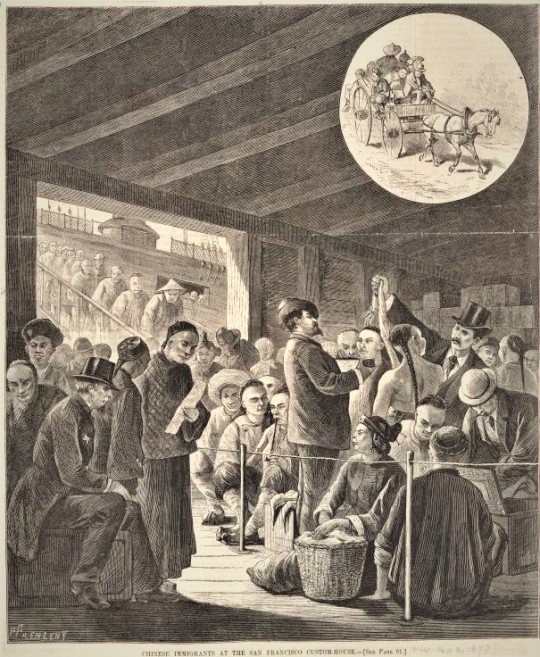
“Chinese Immigrants by the San Francisco Custom House” c. 1877. Detail of the magazine cover illustration by artist Paul Frenzeny for the Harper’s Weekly (from the collection of the New York Public Library.
[updated 2023-10-17]
#Pacific Mail Steamship Co.#Pacific Mail sheds#Chinese immigration detention#Carleton Wtakins#Paul Frenzeny#Harper's Weekly#SS Japan#In re Ah Fook#Stephen Field#Eadweard Muybridge#Pier 36 San Francisco
5 notes
·
View notes
Text
Oded Ezer Workshop - Day Two
Exceptional Concept Exercise
choose one type of project from the options provided
develop concept proposal for the chosen type of project, using the basic steps demonstrated
think of a possible unique product that will be the outcome of such a project
here your ideas with other students to get their feedback and improve your proposal
find 1-3 related projects or references, that will help you to explain your ideas to others

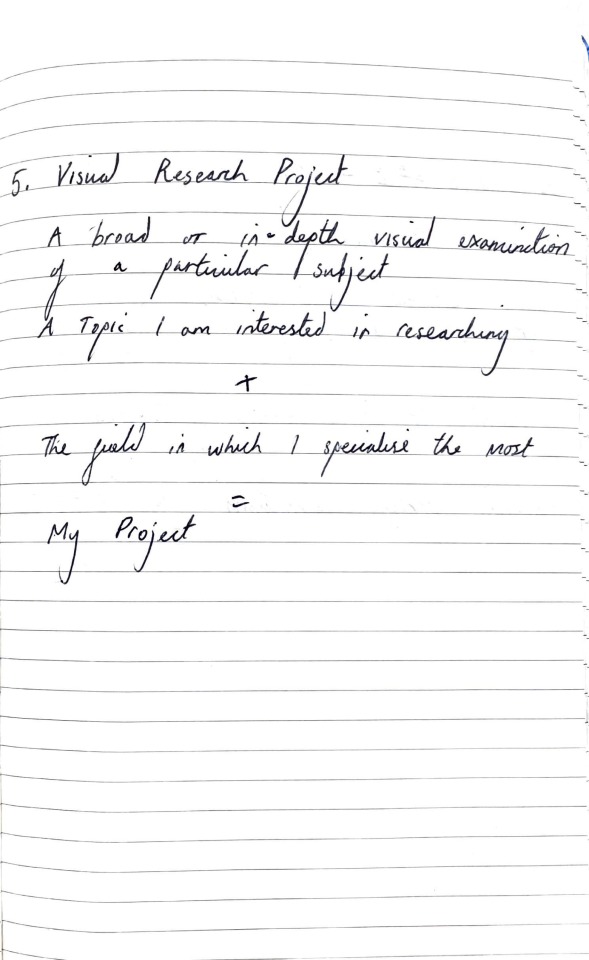
When we started todays exercise I was more immediately drawn to option number four: Revival Project
When thinking of a revival project the immediate and obvious choice that comes to mind is a typeface revival. While this is a good option I have no immediate thoughts which come to mind and I don’t think this type of project would excite me enough. So I started thinking about what else I could revive or what could be considered a revival project.
Once again in his formulas Oded asked us for the field in which we specialise most so I decided to use this as a basic starting point. If type designers revive typefaces or create a typeface derived from old styles and outdated techniques, could this be translated into another medium. My area of interest is animation so I started thinking about how I could revive early animations or play with old animation techniques. I am not an illustrator and obviously originally animations were all hand drawn frame by frame, so instead my mind went to thinking about how I could revive, use or update old animation machinery/technology:

https://www.itsnicethat.com/articles/daniel-stankler-animation-160919
https://www.itsnicethat.vcom/news/mobile-studio-architects-kanazawa-flipbook-product-design-300321
I then thought about what else I could revive, or bring new life to in a broader context. Something that sprung to mind was the number of amazing older songs which, for whatever reason, don’t have music videos. Songs have a story build into them, or a potential narrative which could be open to interpretation, so I thought it could be interesting to take an old song and create a music video for it now as a way to give in new life and highlight meaning. This reminded me of Elton Johns competition the cut, where he challenged filmmakers to create the official music videos for Rocket Man, Tiny Dancer, and Bennie and the Jets. This was a way of getting a younger audience to engage with his music:
I also wondered if I could find a way to revive Ancient Greek mythology stories. I studied classical civilisation in school so I have a fair amount of knowledge surrounding this subject. I feel like Greek Mythology is a really fun convergence of history and fiction which interests and engages a lot of people but there’s not a lot of ways of find out about it beyond personal research and reading these old stories from incredibly long books such as the odyssey.
Obviously Oded wants us to work in the field of design in which we specialise most which for me is animation and motion, so I began thinking about how I could translate Greek mythology and tell these stories through animation. When I spoke to Oded about this he suggested taking inspiration/animating in the art styles of this time, such as the white sculptures:



These are my references for the style of animations I like and felt could work for this idea:
I wasn’t particularly excited about any of these ideas at this stage of the day. When considering the music video idea however I thought of something that might actually work better for project type number five: Visual Research Project
When I was thinking about artists and songs I could use I thought about Sleeping At Last’s album Enneagram, which is 9 songs based on the 9 Enneagram personality types. I could research into the 9 personality types and create a visual language for each. Using this I could then create an animated music video for each of the songs.
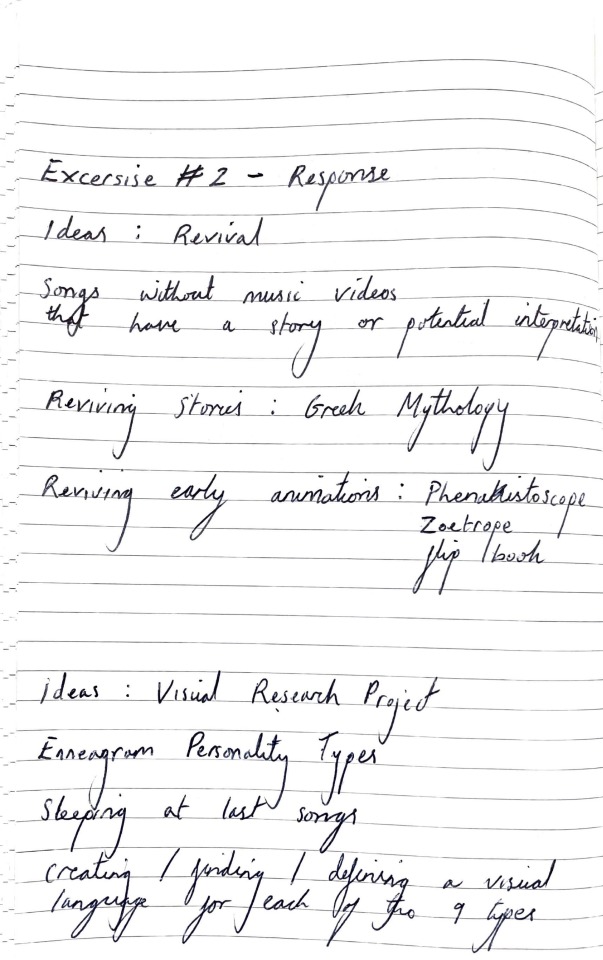

Overall I would say I struggled more with this day, I wasn’t coming up with as many interesting ideas I was excited about for these project starting points.
0 notes
Photo

Animal Locomotion - FICHA TÉCNICA
AUTOR: Eadweard J. Muybridge (1830 – 1904). Fotógrafo británico conocido por su trabajo pionero en la fotografía en movimiento y la proyección de las secuencias fotográficos. Su objetivo era capturar el movimiento que el ojo humano no era capaz de percibir, congelando micro-momentos en el espacio fotográfico. Entre 1883 y 1886, realizó más de 100,000 imágenes de animales y humanos en movimiento.
TÍTULO: Animal locomotion
AÑO: 1887
MEDIDAS: 28,8 x 38,1 cm
PROCEDENCIA: National Gallery Of Art, Washington D.C.
TÉCNICA: Cronofotografía. En 1878, Muybridge utilizó gatillos electromagnéticos anexionados a 12 cámaras que se activaban con el paso del caballo. Mediante el uso de las placas secas, redujo el tiempo de la exposición en la toma fotográfica, adquiriendo la serie de 12 fotografías que ayudarían a probar la hipótesis de Étienne Jules Marey sobre el trotar del caballo y sus patas en el aire (hipótesis que trató de probar contratando a Muybridge y ofreciéndole ayuda económica). Muybridge proyectó los resultados de las fotografías mediante el proyector fenakitoscópico, que mejoró y rebautizó como zoopraxinoscopio. Muybridge influenció a Marey para la invención posterior del fusil fotográfico que fue también clave para la fotografía en movimiento.
GÉNERO Y ESTILO:
Género – Fotografía científica.
Estilo – El estilo de Muybridge se caracteriza por fotografías muy iluminadas que paralizan la acción en micro-imágenes recogidas en muy poco tiempo de exposición. Del mismo modo, la forma en la que sitúa las imágenes nos introduce en una narrativa fotográfica caracterizada por la secuencia que, posteriormente, influirá en el desarrollo de los lenguajes fotográficos contemporáneos.
1 note
·
View note
Photo

Jumping; running straight high jump by Eadweard J. Muybridge, ca. 1885
117 notes
·
View notes
Photo

Eadweard J. Muybridge, Panama Bay by Moonlight, 1875-76
6 notes
·
View notes
Photo

Eadweard J. Muybridge :: Walking, taking off hat, ca. 1884-1887 / source: Flickr
more [+] by this photographer
#eadweard j. muybridge#eadweard muybridge#walking#man walking#hat oof#hat#1880's#studio movement#movement
168 notes
·
View notes
Video
youtube
The violence of being misidentified
or being too precisely identified is equal
Fairytales of Motion, a film by Alan Warburton, created for Tate Exchange
#film#short film#alan warburton#ewan jones morris#donald trump#walt disney#richard williams#mike leigh#timothy spall#peter greenaway#eadweard muybridge#weta#douwe dijkstra#machine learning#surveillance#person of interest#lie to me#animation#rembrandt#j. m. w. turner
31 notes
·
View notes
Photo
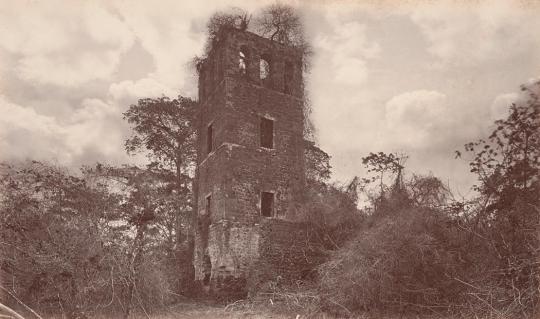
Eadweard J. Muybridge - Ruins of the Watch Tower - Old Panama, 1875-76
153 notes
·
View notes
Photo
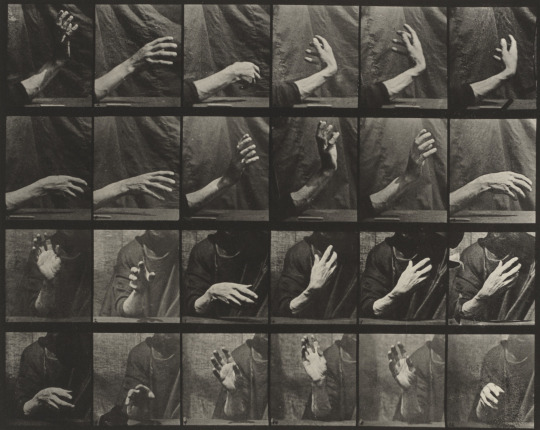
Eadweard J. Muybridge, Movement of the Hand, Beating Time: Plate 535 from Animal Locomotion. 1884-86. Collotype
8K notes
·
View notes
